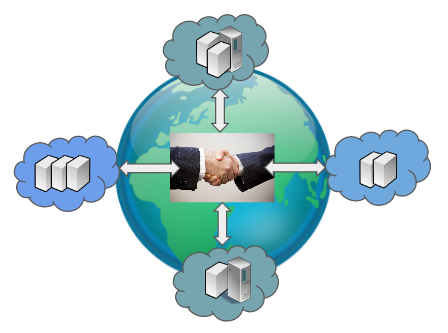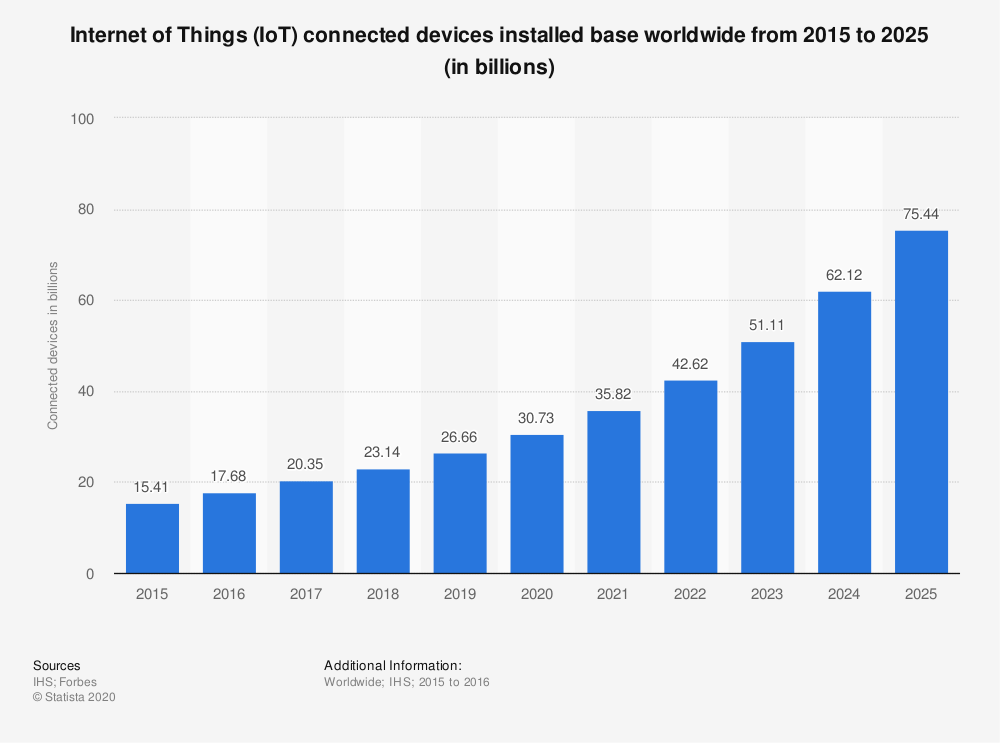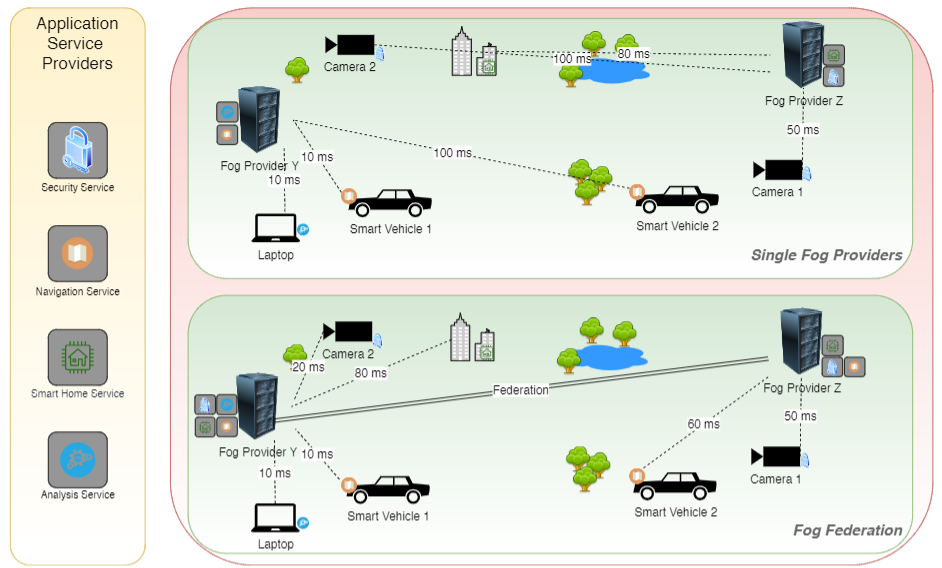
Your Guide To Federated Fog Computing; The Missing Piece For Enabling Smart Cities
- Post by: eargadmin
- 10 February 2021
- No Comment
Rise of Cloud Computing and Federated Cloud.
It all began in the 1960s, where the Network-Based Distributed Computing has emerged. Four decades later, this paradigm turned into what is known nowadays as Cloud Computing, offering various services at the personal and organizational levels. According to statistics, many Cloud service providers are in continuous enormous profit, such as Amazon Web Service, Google Cloud Platform, and Microsoft Azure Cloud.
Due to the success of the Cloud concept, the demand for it was unprecedented. Organizations shifted from investing in local IT infrastructure to the Cloud to maintain service quality and cut costs. Nevertheless, some cloud service providers could not handle some clients due to not having enough available resources. What led to a new business architecture called Federated Cloud, or Cloud Federation.

The Federated Cloud concept consists of merging resources from multiple cloud service providers to handle more clients. That way, Cloud service providers can increase their profits and expand their geographical footprints without new points of presence.
To read more about federated clouds and how they can be efficiently formed, we suggest reading the below articles:
An approach based on genetic algorithms and evolutionary game theory in order to study the problem of forming highly profitable federated clouds, while maintaining stability among the members in the presence of dynamic strategies. https://www.sciencedirect.com/science/article/pii/S0167739X19306995
A maximin game-theoretical model that assists the broker, responsible for creating and managing federations, with maximizing the detection of such malicious providers. https://ieeexplore.ieee.org/abstract/document/8515222
Age of IoT, and The Emergence of Fog Computing.
Internet-of-Things (IoT) devices gained vast popularity due to their simple design and effectiveness. From a smart light bulb to a smart home and a driverless vehicle, IoT devices are everywhere to improve our quality of life. According to Statista, the number of IoT devices will reach a peak of 75.44 billion devices worldwide by 2025.

With that in mind, and with the AI knowledge in hand, organizations started to invest in more IoT applications that can make critical decisions. Autonomous Driving and Intelligent Transport Systems can be considered some of the critical IoT applications the world is moving towards. It’s worth mentioning that these kinds of applications cannot fully rely on the Cloud as a supporting infrastructure due to the network delay provoked. In crucial cases, even 1 millisecond makes a difference, which urged researchers to look for alternatives for enhancing the IT infrastructure. Specifically, Cisco has proposed the fog computing concept that consists of shifting a part of the infrastructure to the edge of the network, near the IoT devices. The newly proposed infrastructure can support the IoT applications with negligible delays due to the short distance between fog servers and end-users.
Federated Fog: The New Era.
Placing servers on the Cloud was an affordable thing to do by the cloud service providers. However, by placing separate servers on the fog level, things get slightly more expensive when covering a wide area, such as a big city. Under those circumstances, and inspired by the effectiveness of federated cloud, we want to point out how important a federated fog solution could be and its crucial role in enriching the supporting infrastructure for the IoT applications.

Saying there are 2 fog servers, server A and server B. Server A assists the vehicles with their autonomous driving application, whereas server B is dedicated to health-care applications. When server A cannot comply with the demand, it can offload some of the tasks to server B if they are in the same fog federation. Likewise, saying that a vehicle was traveling from a place to another (towards server B) does not have to stay connected to server A if connecting to server B can reduce network delays, thus enhancing service quality.
The federated fog architecture is a promising area, and scholars have already started exploring it from various perspectives.
To read more about federated fog computing and how they can these federations be formed, we suggest reading the below article:
An Adaptive and Intelligent federated fog architecture for enabling critical IoT applications. https://ieeexplore.ieee.org/abstract/document/9220179
